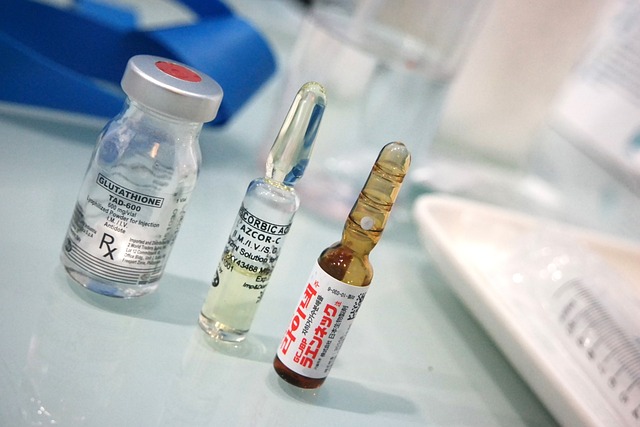The semaglutide injectable form offers a convenient once-weekly treatment for type 2 diabetes and obesity, but requires proper patient training for optimal use. Self-administering injections improve medication adherence, quality of life, and flexibility for patients with limited mobility or remote access to healthcare. Effective training overcomes challenges like injection anxiety and varied health literacy through simple language, visual aids, and hands-on practice. A structured program with step-by-step guidance, visual resources, and personalized instruction creates a comfortable learning environment. Addressing injection anxiety and providing practical tips boosts patient confidence. Regular follow-ups monitor progress, ensure adherence, and educate on medication management. Measuring success through training ease, confidence levels, and self-administration frequency improves patient satisfaction and glycemic control, ultimately enhancing quality of life for chronic condition management.
Patient training for self-administering injections, like the semaglutide injectable form, is a critical component of modern healthcare management. Understanding semaglutide, its benefits, and the importance of self-administration enhances patient autonomy and outcomes. This article explores common challenges in patient training, offers strategies for developing effective training programs, provides step-by-step guides, and emphasizes creating supportive learning environments to address fears. Additionally, it covers follow-up care, continuous education, measuring success, and patient satisfaction, ensuring comprehensive guidance on empowering individuals to manage their health effectively.
Understanding Semaglutide and Its Injectable Form

Semaglutide, a type 2 diabetes medication, has gained popularity due to its innovative injectable form. This drug mimics a natural hormone that regulates blood sugar levels by slowing gastric emptying and reducing appetite. The semaglutide injectable form is a once-weekly injection that offers a convenient and effective way for patients to manage their diabetes. It’s often prescribed for adults with obesity or type 2 diabetes, providing a potential tool in their overall health management strategy.
Understanding how this medication works and the specific steps involved in its administration is crucial for patient training. Healthcare providers must ensure patients are comfortable and informed about self-injecting semaglutide, addressing any concerns or misconceptions. This process involves demonstrating proper injection technique, emphasizing the importance of consistent dosing, and highlighting potential side effects to watch for.
Why Self-Administering Injections are Important for Patients

Self-administering injections, such as the semaglutide injectable form, empower patients to take an active role in their healthcare. This is particularly crucial for managing chronic conditions that require regular medication, like type 2 diabetes. By learning how to self-inject, patients gain a sense of control and independence over their treatment, which can significantly enhance their quality of life.
Moreover, self-administration allows for greater flexibility and convenience compared to frequent clinic visits. It ensures patients receive their doses accurately and on time, contributing to better medication adherence and improved health outcomes. This is especially beneficial for individuals with limited mobility or those living in remote areas who might face challenges accessing healthcare services regularly.
Common Challenges in Patient Training

Patient training for self-administering injections, especially with complex medications like semaglutide injectable forms, comes with several common challenges. One significant hurdle is ensuring patients understand the importance and correct technique of each step involved in the process. Misinterpretations or skipping critical steps can lead to improper dosing or even adverse reactions. Moreover, many individuals experience anxiety or fear related to injections, which can hinder their ability to perform the task confidently.
Another challenge arises from varying levels of health literacy. Patients may struggle with comprehending medical jargon and instructions, particularly when they are receiving new information about their treatment regimen. Effective training strategies must accommodate these barriers, employing simple language, visual aids, and hands-on practice sessions to foster better understanding and skill retention among diverse patient populations.
Developing a Comprehensive Training Program

Developing a comprehensive training program for patient self-administration of injections, such as the semaglutide injectable form, is essential to ensure safety, confidence, and adherence. This involves breaking down complex procedures into manageable steps, providing clear visual aids and written instructions, and offering hands-on practice sessions in a controlled environment. The program should cater to different learning styles, incorporating demonstrations, guided practice, and role-playing to enhance understanding and retention.
Additionally, regular follow-up sessions can reinforce proper injection techniques and address any concerns or challenges patients may encounter post-training. Encouraging open communication and offering continuous support fosters a sense of comfort and competence, ultimately empowering individuals to self-administer their semaglutide injections with confidence and accuracy.
Step-by-Step Guide to Injecting Semaglutide

Step-by-Step Guide to Injecting Semaglutide
Before administering a semaglutide injection, ensure you have the appropriate equipment: a syringe with the correct needle length (typically 4-8 mm), the prefilled semaglutide pen or vial, and alcohol swabs. Start by preparing the injection site—usually the abdomen or upper arm—by cleaning it with an alcohol swab to reduce the risk of infection. Remove the cap from the needle and dispose of it in a sharps container. Then, draw up the required dose of semaglutide using the syringe, following the prescribed guidelines.
Next, insert the needle into the skin at a 90-degree angle, aiming to hit fat tissue just beneath the surface. Gently press down on the syringe to inject the medication. Withdraw the needle slowly and gently to prevent bleeding. Clean the injection site again with an alcohol swab after removing the needle. Discard both the needle and syringe properly. Finally, dispose of any unused semaglutide according to local regulations, ensuring it doesn’t contaminate other medications or waste.
Creating a Supportive Environment for Learning

Creating a supportive environment is essential for effective patient training on self-administering injections, especially for complex medications like semaglutide, an injectable form used in diabetes management. Healthcare providers should strive to make the learning process as comfortable and non-intimidating as possible. This can be achieved by fostering an atmosphere of open communication where patients feel at ease asking questions. A calm, quiet setting with minimal distractions allows for better concentration and retention of information.
Incorporating visual aids, step-by-step demonstrations, and hands-on practice under expert supervision can significantly enhance the patient’s understanding and confidence in self-injecting. The environment should also accommodate different learning styles; some patients might benefit from written instructions or audio guides while others thrive in group settings where they can observe peers. Tailoring the learning experience to individual needs ensures that patients feel empowered and prepared to manage their medications successfully.
Addressing Patient Fears and Concerns

Many patients may feel anxious or unsure about self-injecting medications like semaglutide, a common injectable form used for diabetes management. It’s essential to address these fears and concerns head-on during patient training. Healthcare providers should create a safe, non-judgmental environment where patients can openly discuss their worries. Reassure them that proper training and support will empower them to take control of their healthcare.
Offer simple, clear explanations about the injection process, highlighting its simplicity and safety. Share success stories from other patients who have mastered self-injection to boost confidence. Provide practical tips for overcoming common fears, such as focusing on breathing techniques during the injection or associating it with a positive routine. This supportive approach will make patients feel more comfortable and prepared to face their apprehensions.
Follow-up Care and Continuous Education

After patients learn how to self-administer injections, regular follow-up care is crucial for their safety and success. This includes scheduled appointments where healthcare providers can monitor progress, address any concerns or difficulties encountered while self-injecting, and offer guidance on proper disposal of used syringes and vials. Continuous education is also vital; patients should receive ongoing information about the medication’s action, potential side effects, and how to recognize and report adverse reactions. For instance, with semaglutide injectable forms, understanding its role in glucose control and being aware of common injection site reactions can enhance patient satisfaction and adherence to treatment plans.
Measuring Success and Patient Satisfaction

Measuring success and patient satisfaction are paramount when training individuals to self-administer injections, especially with complex drugs like semaglutide, a popular injectable form for diabetes management. Patient feedback plays a critical role in understanding the effectiveness of training programs. Simple yet robust metrics can include assessing the ease of learning the injection technique, the confidence level gained after training, and the frequency of correct self-administration over time.
Satisfaction surveys should probe patients’ overall experience with both the training process and their newfound ability to manage their medication autonomously. This feedback loop helps healthcare providers refine training protocols, ensuring they meet individual needs and expectations. Ultimately, successful patient training translates into improved adherence to treatment plans, better glycemic control, and enhanced quality of life for those managing chronic conditions like diabetes.
